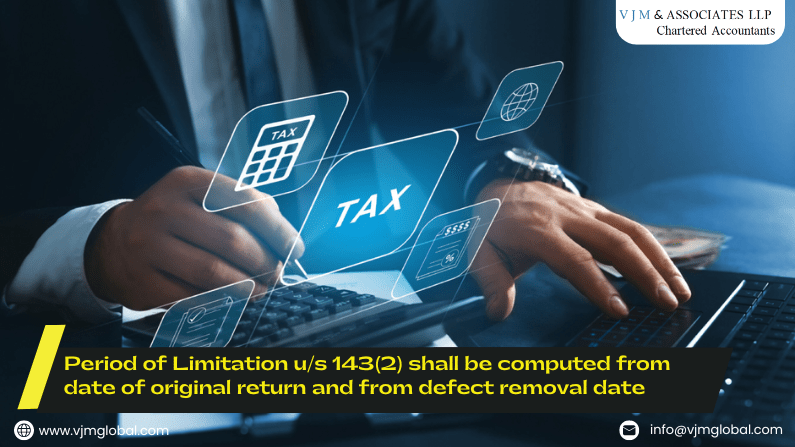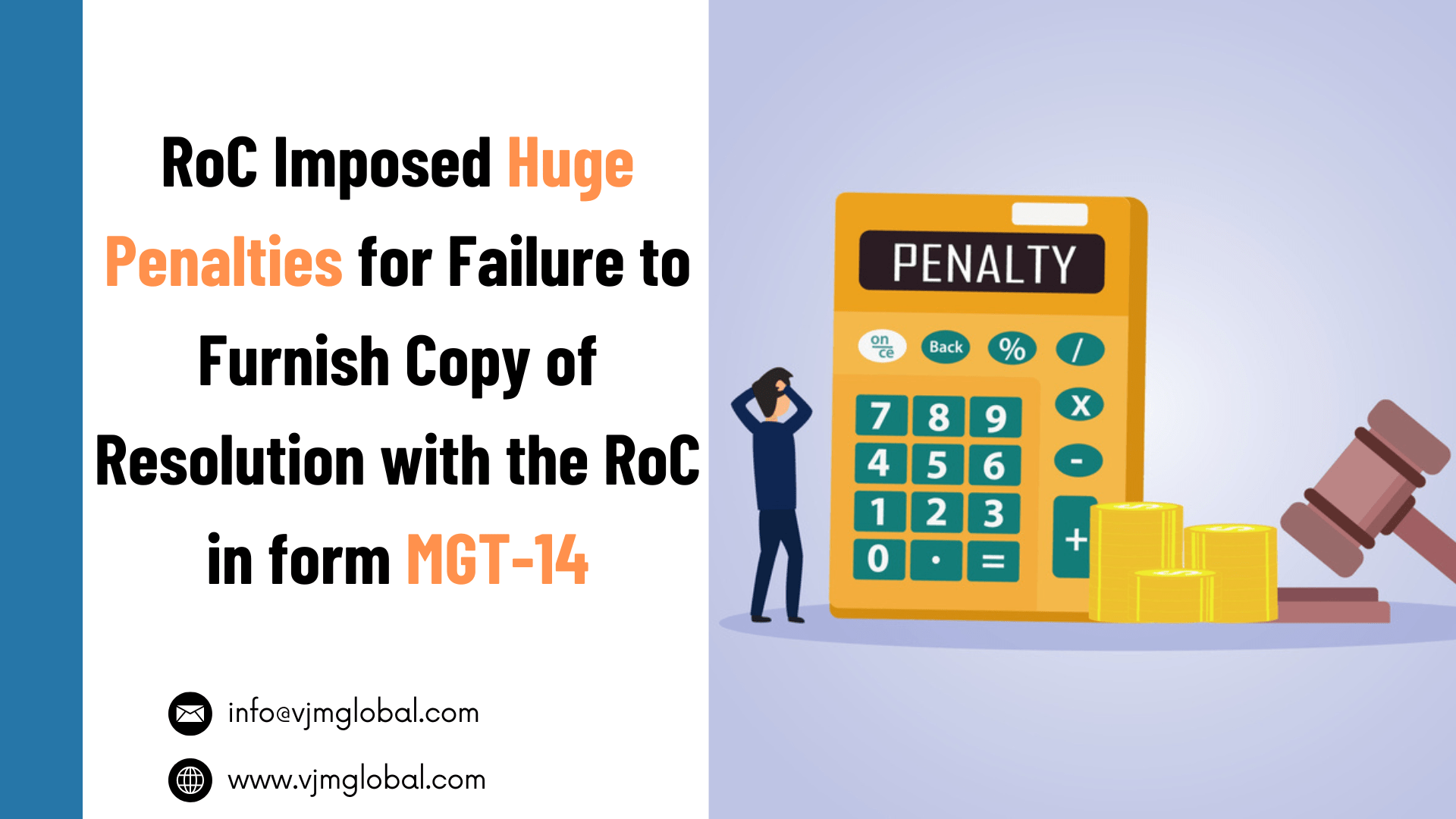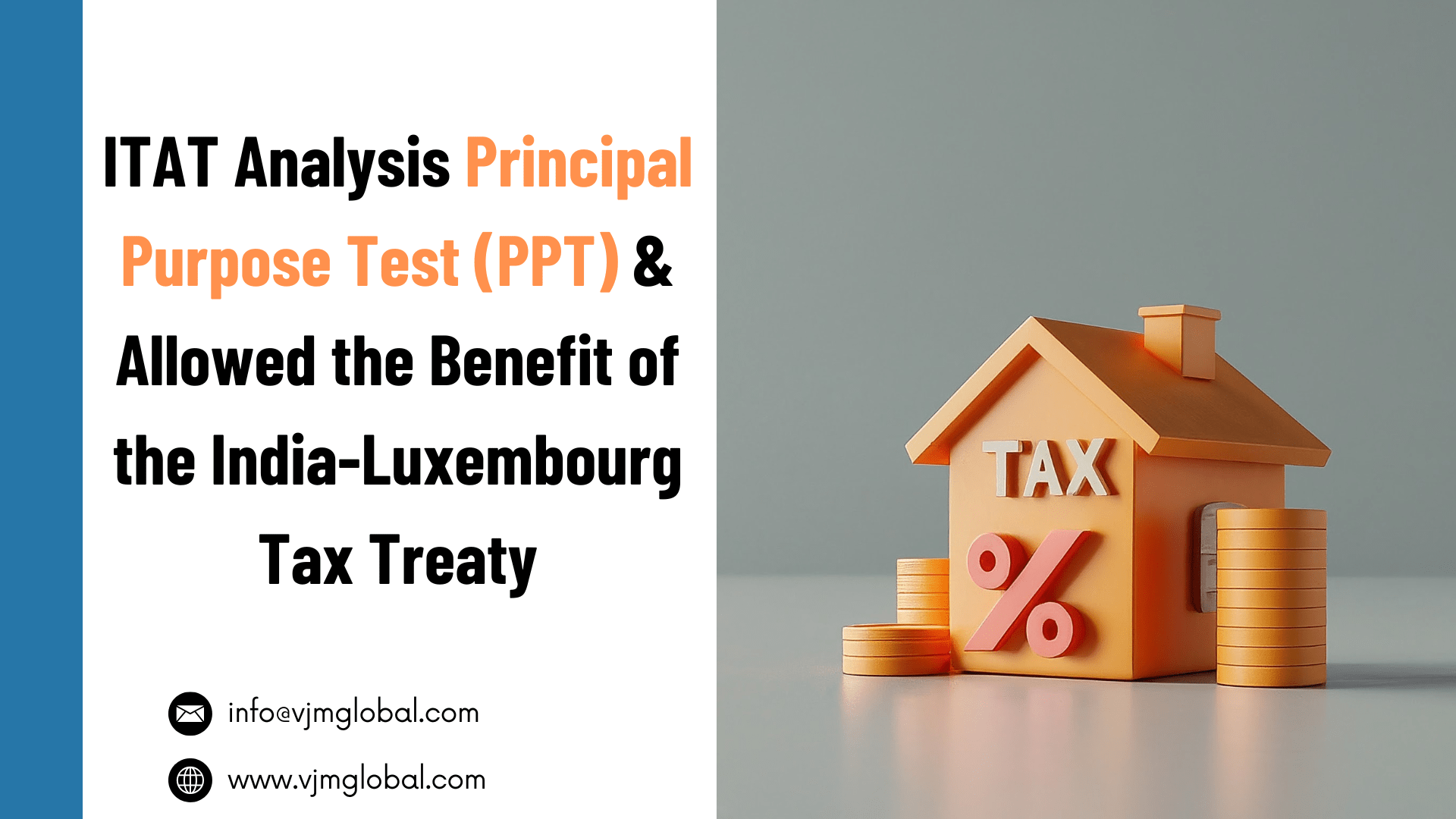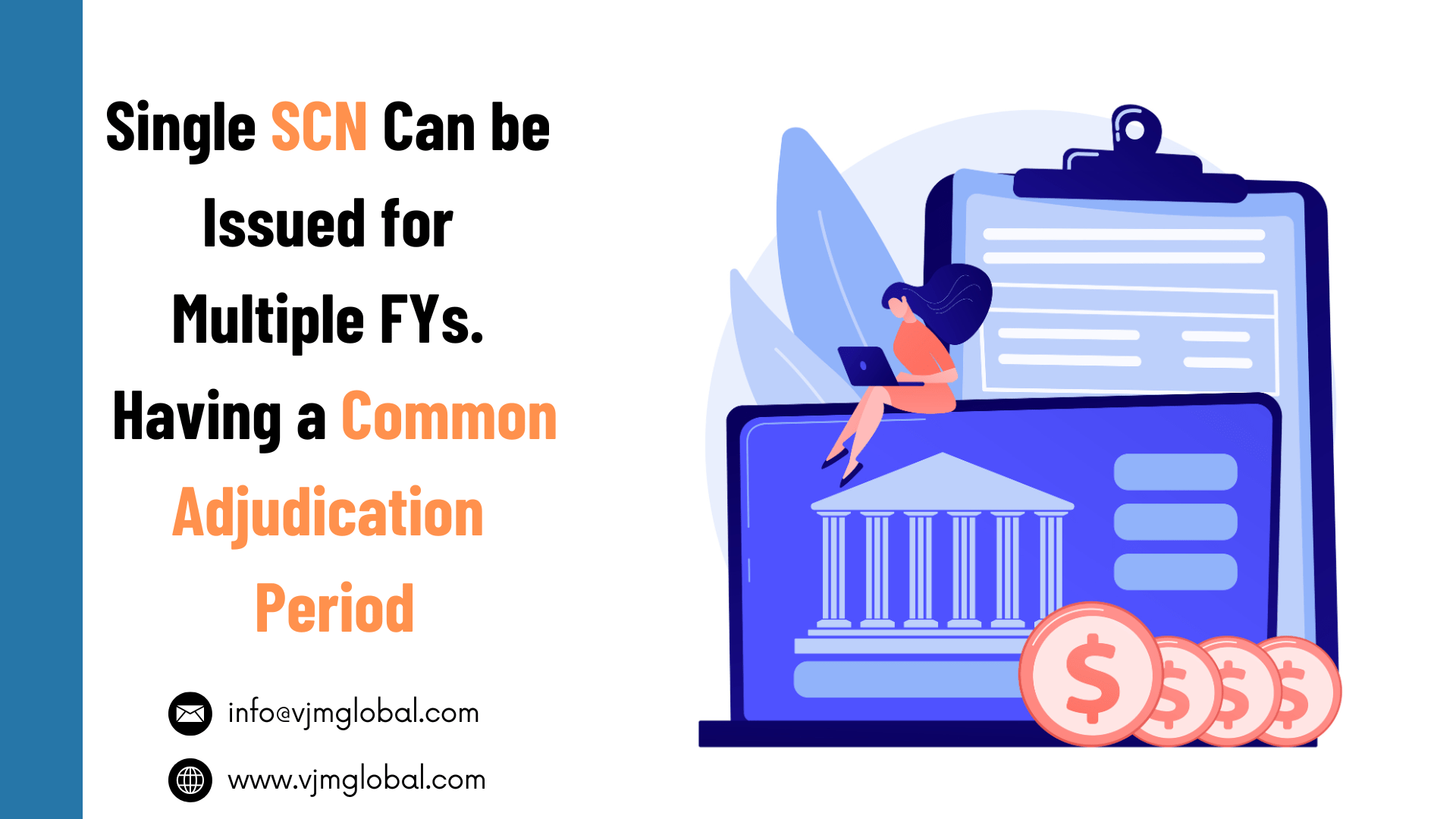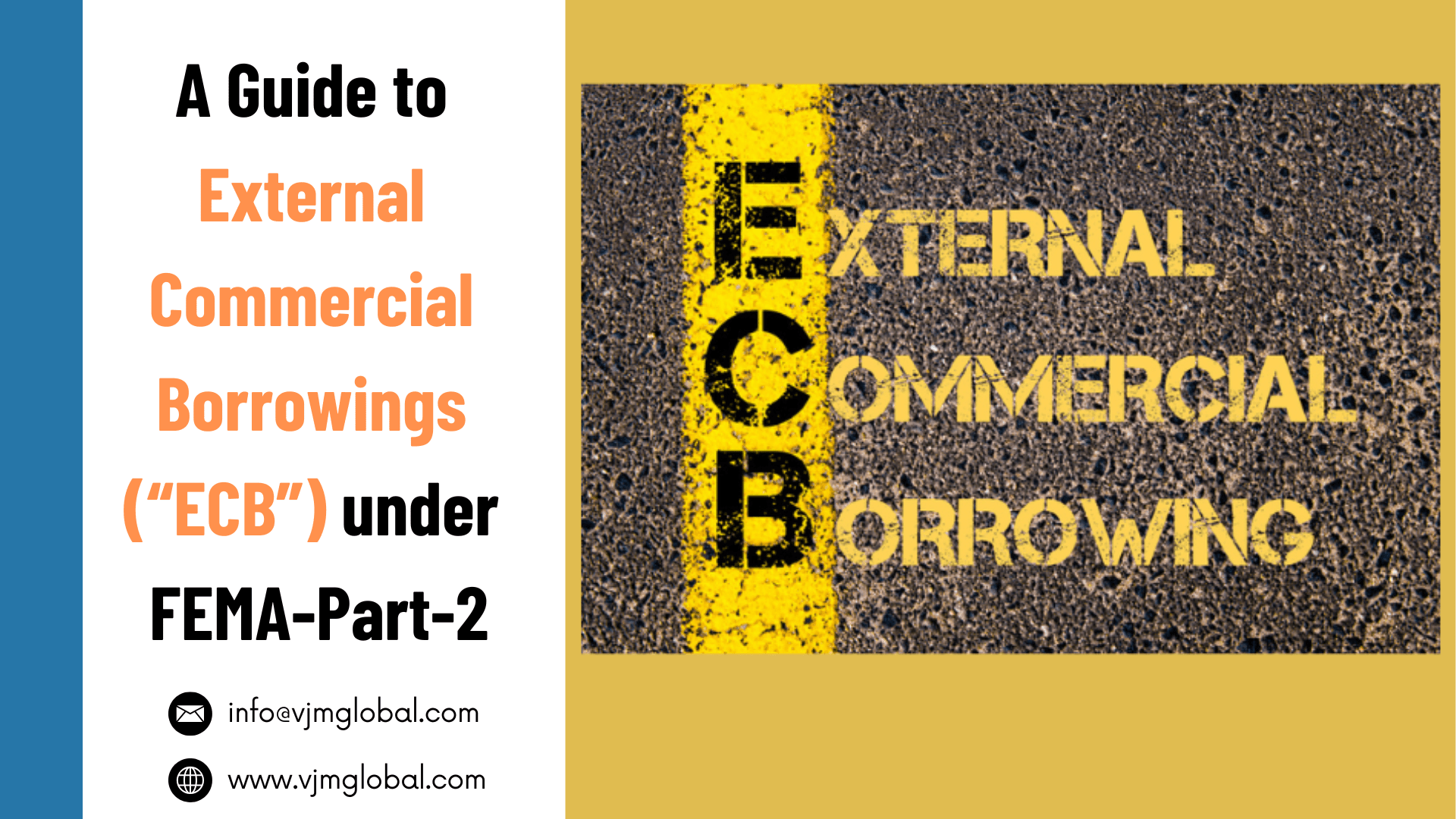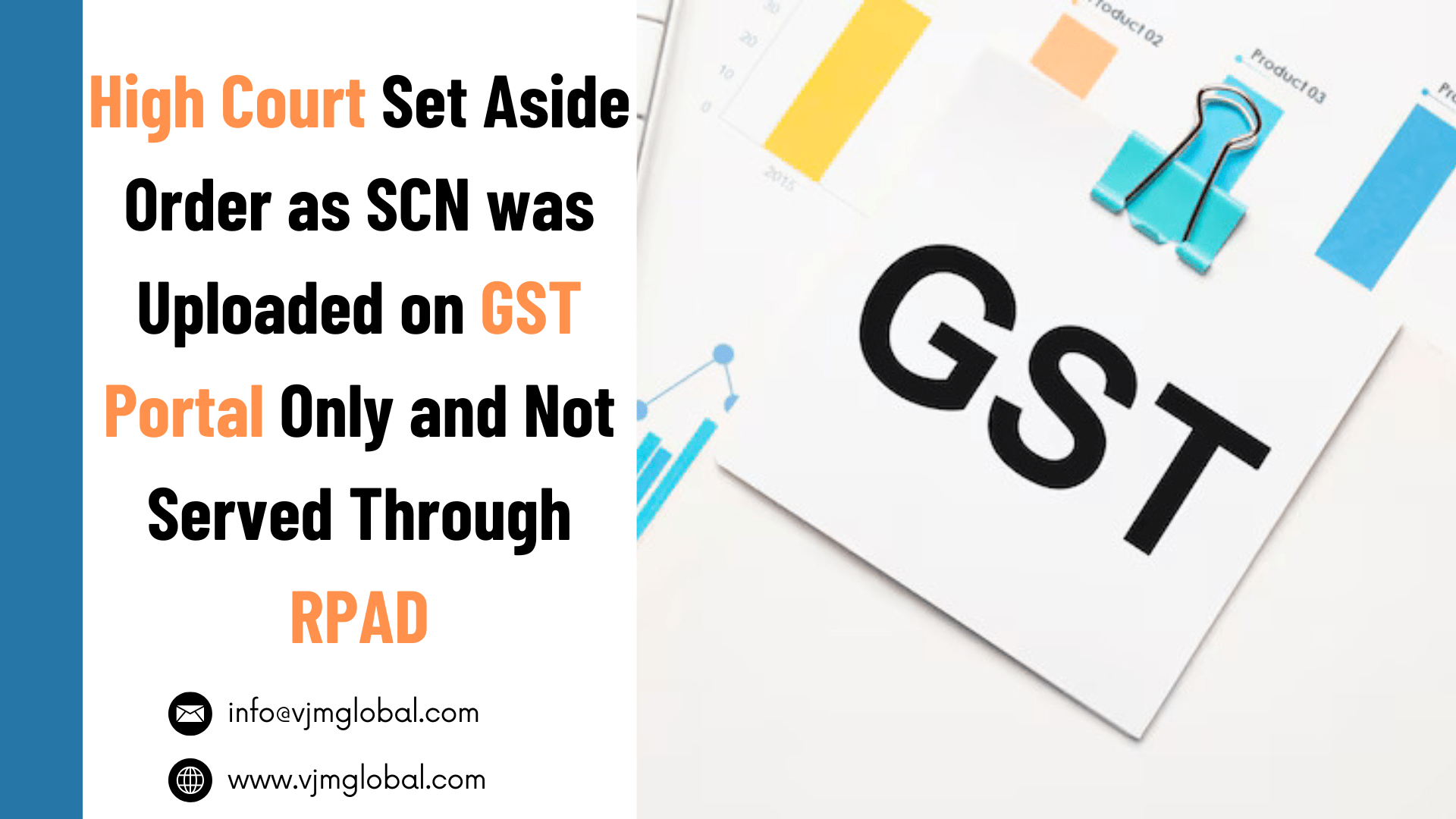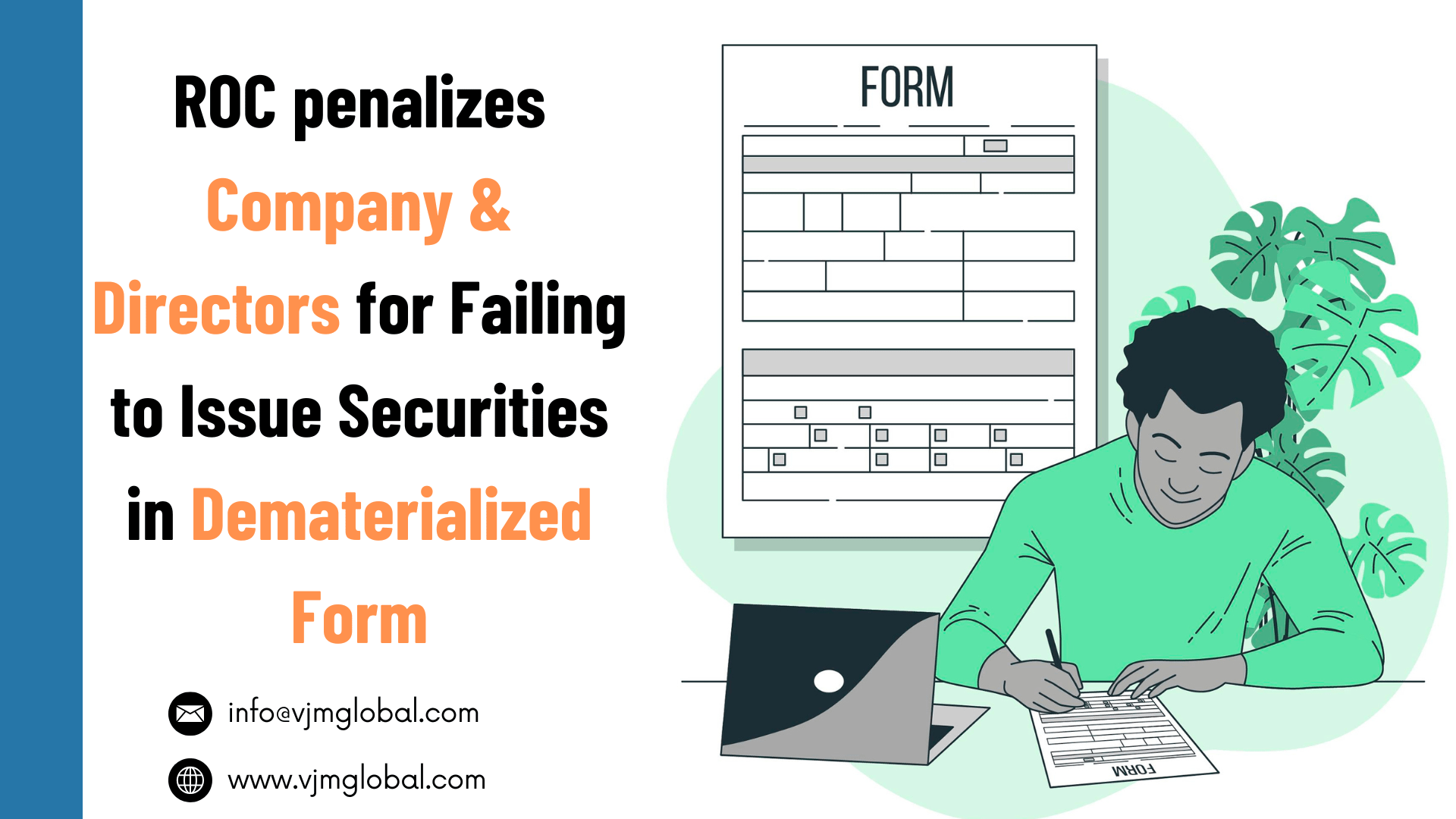Held by Hon’ble ITAT in the matter of
Aark Infosoft Private Limited Vs The ACIT, Circle-1(1)(1), Ahmedabad (ITA No. 681/Ahd/2023)
The Assessee filed the Income Tax return on 28.07.2017. Notice for defective return was issued to the Assessee on 06.07.2018 and such defect was rectified on 19.08.2018. Therefore, the return got processed under Section 143(1)(a) of Income Tax Act and corresponding refund was also issued. Later, notice was issued under section 143(2) of the act on 22nd September, 2019. The Assessee challenged the validity of Assessment framed under Section 143(2) contended that notice was issued beyond period of limitation. The Assessee contended that The limitation for issuance of notice u/s 143(2) of the Act was not to be determined from the date/end of the financial year in which the defect was rectified. Rather the same should be determined from the date/end of financial year when the original return of income was filed.
Hon’ble ITAT held that Proviso to Section 139(9) clearly specifies that assessment proceedings can be initiated even if defect, issued under section 139(9) of the act, is not removed. Therefore, removal of defect is no bar to the Assessing Officer from proceeding with his assessment proceedings. Accordingly, the Assessing Officer can proceed with the assessment without waiting for the removal of defects. Since, the assessment proceedings can be initiated even with defective returns, therefore, the limitation for issuing notice u/s 143(2) of the Act will logically run from the year in which return is filed and not when the defect is removed by the assessee.
1. Brief Facts of the case
- M/s Aark Infosoft Private Limited (“The Assessee”) filed income tax return for A.Y. 2017-18 under section 139(1) of Income Tax Act on 28th october, 2017.
- Notice of defective return was issued to the Assessee on 6th June, 2018.
- After subsequent reminders, the Assessee ultimately rectified the defect on 19th August, 2018.
- After filing, preliminary assessment of the return got completed on 30th March, 2019 under section 143(1)(a) of the Act.
- Refund was issued to the Assessee on 9th April, 2019.
- Further, Notice u/s 143(2) of the Act was issued to the Assessee on 22nd September, 2019.
- The Assessee raised a legal ground challenging validity of assessment framed on account of jurisdiction notice under Section 143(2) on account that notice is issued beyond the period of limitation specified under the section.
2. Issue under Litigation
The Issue for litigation is whether the jurisdictional notice issued for framing assessment under Section 143(2) of the Act, was issued within the time limit prescribed under the Act for doing so?
3. Relevant Legal Extract
Relevant legal extract is reiterated below for ready reference:
a. Relevant Extract of Section 143(2) of Income Tax Act, 1961:
““143
…
(2) Where a return has been furnished under section 139, or in response to a notice under sub-section (1) of section 142, the Assessing Officer or the prescribed income-tax authority, as the case may be, if, considers it necessary or expedient to ensure that the assessee has not understated the income or has not computed excessive loss or has not under-paid the tax in any manner, shall serve on the assessee a notice requiring him, on a date to be specified therein, either to attend the office of the Assessing Officer or to produce, or cause to be produced before the Assessing Officer any evidence on which the assessee may rely in support of the return:
Provided that no notice under this sub-section shall be served on the assessee after the expiry of six months from the end of the financial year in which the return is furnished.
..”
b. Proviso to Section 139(9) of Income Tax Act:
“139….
(9) Where the Assessing Officer….
Provided that where the assessee rectifies the defect after the expiry of the said period of fifteen days or the further period allowed, but before the assessment is made, the Assessing Officer may condone the delay and treat the return as a valid return.”
4. Contention of the Assessee
The Assessee contended that:
- After filing of return of Income of relevant assessment year, defect notice u/s 139(9) of the Act was sent to the assessee.
- Such defect notice was cured by the Assessee on 19.08.2018.
- Thereafter, notice was issued to the Assessee u/s 143(2) of the Act on 22.09.2019 assuming jurisdiction to initiate assessment proceedings, on 22.09.2019.
- The limitation for issuance of notice u/s 143(2) of the Act was not to be determined from the date/end of the financial year in which the defect was rectified. Rather the same should be determined from the date/end of financial year when the original return of income was filed.
- In the given case, the return of income was filed on 28.10.2017.
- Therefore, as per Section 143(2) of the act, notice was to be issued by 30.09.2018.
- However, in the given case, it was issued on 22.09.2019, i.e. more than a year after the prescribed date. Therefore, the assessment framed was not sustainable and liable to be quashed.
- Date of rectification of defect in the return is of no relevance under Section 143(2).
5. Contention of the Department
The Department Representative contended that:
- Limitation for issuance of notice u/s 143(2) of the Act was to be determined from the date when the defect was removed by the assessee, i.e., 19.08.2018. Therefore, notice is issued within the limitation prescribed under the Act.
- The Assessee had cured the defect beyond the time period prescribed u/s 139(9) of the Act dealing with defective returns.
- Further, reliance was placed on decisions of Hon’ble Supreme Court in the case of Deputy Commissioner of Income-tax (Exemption) Vs. Kalinga Institute of Industrial Technology, wherein it was held that where the assessee do not challenge the defect in the notice and participated in the proceedings, subsequently, he shall be debarred from challenging jurisdiction of the Assessing Officer.
6. Analysis and finding by the Hon’ble Income Tax Appellate Tribunal
Hon’ble ITAT has analyzed that:
- Proviso to Section 139(9) of the Act clearly specifies that removal of defect is no bar to the Assessing Officer from proceeding with his assessment proceedings.
- As per Section 139(9) of the Act, the assessees are required to remove the defects in ITR after receiving intimation of defect within the prescribed time limit. However, as per the proviso, if defect is removed after the expiry of the time, but before the assessment is made, the Assessing Officer can condone the delay and treat the return as valid return.
- It clearly means that the assessee can remove the defects upto to the framing of the assessment.
- Accordingly, the Assessing Officer can proceed with the assessment without waiting for the removal of defects.
- Since, the assessment proceedings can be initiated even with defective returns, therefore, the limitation for issuing notice u/s 143(2) of the Act will logically run from the year in which return is filed and not when the defect is removed by the assessee.
- Further, the Hon’ble jurisdictional High Court in the case of Kunal Structure (India) (P.) Ltd. (supra) held that:
- A defect in a return does not require any fresh return to be filed but only the defect to be removed. The Act of removal of defect would relate back to the filing of return of income.
- Further, the limitation prescribed for issuing notice u/s 143(2) of the Act runs from the date of filing return of income u/s 139 of the Act or u/s 142(1) of the Act.
- Therefore, notice u/s 143(2) of the Act was to be issued within the time prescribed from the date of filing return of income and not from the date of removal of defect u/s 139(9) of the Act.
- Also, with respect to applicability of decision of Hon’ble Apex Court in the case of the Kalinga Institute of Industrial Technology (supra), have challenged the jurisdiction of the Assessing Officers under Section 124 of the Act and has nothing to do with the limitation prescribed under u/s 143(2) of the Act.
- The Revenue has contended that assessee had not cured the defect within the period prescribed and therefore the original return is considered as invalid. Accordingly, limitation u/s 143(2) of the Act be determined from the date of removal of defect. However, if the original return is to be treated invalid then it shall be considered that no return has been filed. In such case, how notice could be issued u/s 143(2) in absence of any valid return of income.
- Also, by accepting the defect removed by the assessee and subsequently processing the return u/s 143(1) of the Act, it seems that Assessing officer has condoned the delay in removal of defect.
7. Order
The Hon’ble ITAT has held that Assessment order is quashed finding the jurisdictional notice u/s 143(2) of the Act being issued beyond limitation prescribed under the Act.

